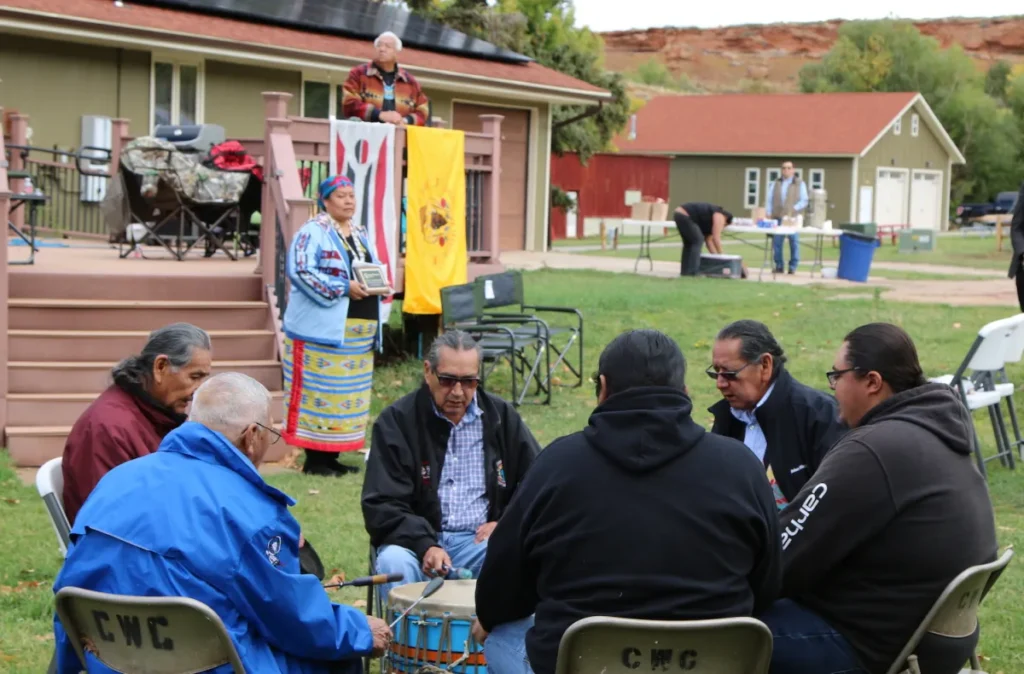Article courtesy of WyoFile
The broken red cliffs, tall cottonwood stands and apple orchards of Central Wyoming College’s Alpine Science Institute on the banks of the Popo Agie River in Fremont County were once part of the Wind River Indian Reservation.
Indigenous students, faculty and tribal members celebrated the land’s cultural significance on Sept. 30 with a cedaring ceremony, speeches and song.
“It’s important for us to continue to educate about Indigenous presence in areas that we used as ancestral lands,” said Ivan Posey, CWC’s tribal education services coordinator.
The campus and nearby city of Lander were part of an Indigenous trade hub that was important to the Shoshone tribe, linguist and speaker Lynette St. Clair said. “Our native peoples have lived on this land since time immemorial. And the resilient voices of Native Americans remain an inseparable part of our local culture,” she said.
During the event, participants highlighted traditional ecological knowledge, which refers to the evolving knowledge Indigenous people have gathered over millennia about plants, animals and other natural phenomena. The campus region is home to species that range from rattlesnakes to deer, and plants such as chokecherries, rose hips and sagebrush. Two teepees were recently erected that will be permanent fixtures on campus.
“Yes, we are here. We are re-acknowledging,” CWC outgoing professor Dr. Tarissa Spoonhunter said. During a recent workshop at ASI, she said, she witnessed a lot of Fremont County residents using the campus to do things like hike and mountain bike. “In the three days of that workshop, there was no tribal people here. We really want to make this place more inviting, more inclusive.”
Katie Klingsporn
Katie Klingsporn is WyoFile’s managing editor. She is a journalist and word geek who has been writing about life in the West for 15 years. Her pieces have appeared in Adventure Journal and National Geographic.



